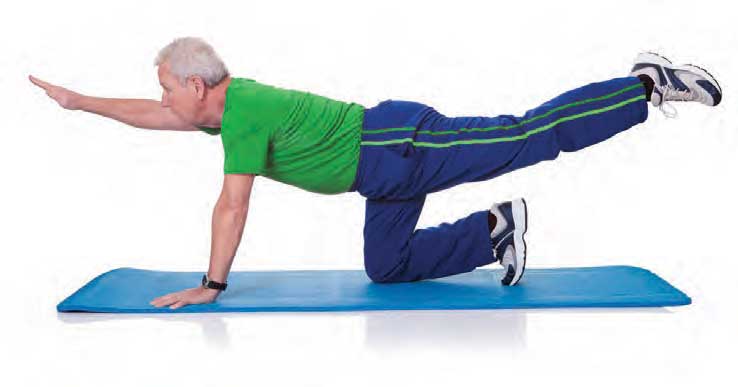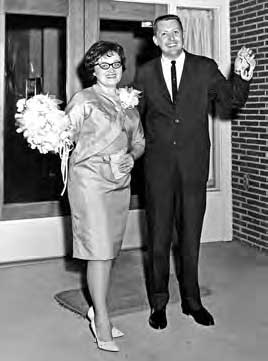
The Perfect Blend
A 50-year marriage, a unified faith in God and a desire to help others. Such describes Mary Ann and Roy Thurmond. Additionally, their philosophy of life is that relationships are more important than “the doings.” Yet, when one examines a short biography of their lives, the perfect blend of both of these elements emerge.
Mary Ann Faris grew up in Conway, Arkansas, where her father was a professor at Hendrix College, as well as a renowned author and photographer. Her mother, an elementary school teacher, wrote the scripts to accompany her father’s photographs. Together, they appeared in several national publications such as LIFE Magazine and The New York Times. When Mary Ann was 8 years old, her father was invited to photograph an art exhibit at Rohwer, one of the 10 internment camps set up to confine Japanese Americans after the bombing of Pearl Harbor. The photographs were published in a book, Beauty Behind Barbed Wire. Mary Ann continues today, along with her brother Tim, to share these photos through a traveling exhibit, compiled by an Arkansas State University history professor. The exhibit has been shown in several locations, including the Presidio in California and was written up in Memphis Magazine in March, 2017 when being on view at the Memphis Botanic Garden. Because of her parents’ influence, Mary Ann grew up with her own interest in writing and photography. She dedicated her life to Christ at a camp revival on Petit Jean Mountain in Arkansas at age 11.
Following graduation from Hendrix, Mary Ann held several positions with the Baptist Hospital System, first in Little Rock and later in Memphis. While working as Student Activities Director at Baptist School of Nursing, she had the opportunity to chaperone 3 planeloads of students who sang at various functions during the 1964 World’s Fair in New York City. She later accompanied 5 students to Berne, Switzerland for a Baptist Youth Conference. Mary Ann’s other employment included 5 years on the staff of Christ United Methodist Church and then as Administrative Manager/Partner for 30 years with a management consulting firm.
Mary Ann, who was still single at age 31, met Roy in 1968, a year following the death of his wife Alice who died at age 30. He was left with 2 small children, a boy and a girl, ages 1 and 3. Mary Ann and Roy dated only 3 ½ weeks before deciding to marry, surprising her parents who would then become sudden grandparents! Together they had another child, a daughter, and 50 years later, the 3 Thurmond children are all grown and living out-of-state. There are now 3 grandchildren, 3 step-grandchildren and 5 step-great-grandchildren.
Roy was born in his grandmother’s home in Columbus, Georgia. He has one sister, Reba, living in West Virginia. His mother was a seamstress and his father was treasurer of a textile mill. His father brought metal scraps home and made such things as wagons and even a roller coaster for their back yard. He spent his childhood playing football and basketball in backyards and on dirt courts. His height proved to be a real plus in helping his school win several championships in basketball. At the age of 11, Roy and his sister attended a church revival and dedicated their lives to Christ.
Roy attended Georgia Tech, majoring in civil engineering, but later transferring to management. Following graduation, Roy went into the Army National Guard for 6 months of active duty and then married his college sweetheart Alice. They moved to North Carolina where Roy worked at Burlington Industries as an accountant. Roy was active in the Jaycees, volunteering when they sponsored the Greater Greensboro golf tournaments. He also earned a CPA designation and moved his family to Memphis. Here he worked for an accounting firm and Union Planters Bank. Roy finished his professional career by working as a certified financial planner for J. H. Shoemaker and Co. for 25 years.
Roy’s love for bike riding has taken him on eleven 150-mile Multiple Sclerosis benefit rides, plus riding across 3 states. Following in his father’s footsteps, Roy became a “man of all trades” – able to fix almost anything. He has always loved helping people, even starting a ministry at their church called Helping Hands.
All through their marriage, Mary Ann and Roy have focused their energies around activities of their church, Christ United Methodist. Just a few highlights include Mary Ann’s being active in United Methodist Women and serving as President, Secretary, and email correspondent of the Lamplighter S.S. class. Roy, likewise is very active and enjoys ushering, as well. He participated on a Methodist District Disaster Response team. Their motto was “Have chain saw, will travel,” as they took tractors and their saws to clear devastated areas following severe storms.
So, what is next for this couple? Roy loves woodworking and repairing items. (Watch out, Roy, you are about to be bombarded with new friends!) Mary Ann loves growing flowers, learning Mahjong, line dancing, and writing; and, of course, working with her father’s photographs and continuing with the Rohwer story.
The Thurmonds feel strongly that God has a purpose for their lives and they know that fulfillment comes from that commitment. Kirby Pines has become their new home and they are very happy here, surrounded by such wonderful caring people and staff. A favorite quote of Mary Ann’s is “When a butterfly flaps its wings in South America, it affects the weather in Florida.” This means, according to Mary Ann, that we are all connected in some way and our actions, no matter how small, make a difference! She further states that “We have a deep gratitude for our past relationships and for our new ones here! God has blessed us to live among you, doing life together – and those are the ‘doings’ that count!”



 Speaking of walking—Would you like to begin a walking program? If you can you walk at least ten minutes and desire to improve your overall health and well-being, the Arthritis Foundation Walk with Ease Program will teach you how to safely make physical activity part of your everyday life. Walk with Ease offers support, information and tools to help you succeed. We will look at improving our posture and our gait. Balance and endurance are emphasized as well as making friends and learning our way around the hallways. Classes will begin September 17th for nine weeks meeting twice each week on Tuesdays and Thursdays in the Arts & Crafts room at 1:30 and led by Mary Hand who is a trained Arthritis Foundation walking leader. Each meeting begins with a short discussion covering a topic related to exercise or arthritis, followed by a 10- to 40-minute walk that includes a warm-up and cool-down, stretches, and take home exercises that will build strength for walking. We will begin walking inside and with good weather, walking outside will be an option. The program will include a very helpful guidebook, lots of surprises, good camaraderie and special encouragements along the way. For newcomers to Kirby Pines, it’s a great way to meet your neighbors and learn your way around. We are especially looking for people who want to begin an exercise program, as well as graduates of the program who are always welcomed back and encouraged to bring a friend. Contact Life Enhancement Department or sign up in the Oasis.
Speaking of walking—Would you like to begin a walking program? If you can you walk at least ten minutes and desire to improve your overall health and well-being, the Arthritis Foundation Walk with Ease Program will teach you how to safely make physical activity part of your everyday life. Walk with Ease offers support, information and tools to help you succeed. We will look at improving our posture and our gait. Balance and endurance are emphasized as well as making friends and learning our way around the hallways. Classes will begin September 17th for nine weeks meeting twice each week on Tuesdays and Thursdays in the Arts & Crafts room at 1:30 and led by Mary Hand who is a trained Arthritis Foundation walking leader. Each meeting begins with a short discussion covering a topic related to exercise or arthritis, followed by a 10- to 40-minute walk that includes a warm-up and cool-down, stretches, and take home exercises that will build strength for walking. We will begin walking inside and with good weather, walking outside will be an option. The program will include a very helpful guidebook, lots of surprises, good camaraderie and special encouragements along the way. For newcomers to Kirby Pines, it’s a great way to meet your neighbors and learn your way around. We are especially looking for people who want to begin an exercise program, as well as graduates of the program who are always welcomed back and encouraged to bring a friend. Contact Life Enhancement Department or sign up in the Oasis.
 On July 20, 1969, American astronauts Neil Armstrong (1930-2012) and Edwin “Buzz” Aldrin (1930-) became the first humans ever to land on the moon. About six-and-a-half hours later, Armstrong became the first person to walk on the moon. As he took his first step, Armstrong famously said, “That’s one small step for man, one giant leap for mankind.” The Apollo 11 mission occurred eight years after President John F. Kennedy (1917-1963) announced a national goal of landing a man on the moon by the end of the 1960s. Apollo 17, the final manned moon mission, took place in 1972.
On July 20, 1969, American astronauts Neil Armstrong (1930-2012) and Edwin “Buzz” Aldrin (1930-) became the first humans ever to land on the moon. About six-and-a-half hours later, Armstrong became the first person to walk on the moon. As he took his first step, Armstrong famously said, “That’s one small step for man, one giant leap for mankind.” The Apollo 11 mission occurred eight years after President John F. Kennedy (1917-1963) announced a national goal of landing a man on the moon by the end of the 1960s. Apollo 17, the final manned moon mission, took place in 1972.




 There are several factors that predispose us to have altered posture as we age and each will be considered. But before mentioning each factor, it is important to know that our bones, muscles, and joints are all part of the musculoskeletal system that defines our posture. The backbone or vertebral column is made up of the bones (called vertebra), joint-like spaces called intervertebral discs, and muscles. Age has a pronounced effect on all three and over time the back tends to curve forward resulting in an increasingly stooped posture.
There are several factors that predispose us to have altered posture as we age and each will be considered. But before mentioning each factor, it is important to know that our bones, muscles, and joints are all part of the musculoskeletal system that defines our posture. The backbone or vertebral column is made up of the bones (called vertebra), joint-like spaces called intervertebral discs, and muscles. Age has a pronounced effect on all three and over time the back tends to curve forward resulting in an increasingly stooped posture. As with most age-related changes, there are things that we can do to prevent or delay the changes. The list below shows factors that we choose and which can improve our posture. Most of the factors are self-explanatory and well known to readers of this column. Exercise is by far the most important factor in maintaining a younger posture because it improves the bone and muscle functions that are essential in maintaining musculoskeletal health. The last item, paying attention to erect posture and not slumping, is easier said than done. One must be mindful of proper carriage.
As with most age-related changes, there are things that we can do to prevent or delay the changes. The list below shows factors that we choose and which can improve our posture. Most of the factors are self-explanatory and well known to readers of this column. Exercise is by far the most important factor in maintaining a younger posture because it improves the bone and muscle functions that are essential in maintaining musculoskeletal health. The last item, paying attention to erect posture and not slumping, is easier said than done. One must be mindful of proper carriage. Here are some more tips to help you avoid injury or discomfort:
Here are some more tips to help you avoid injury or discomfort: Next time you are near the Oasis, come in and give the recumbent bike a spin. Make an appointment with Mary Hand. She will be glad to demonstrate the recumbent bike and the other equipment in the Oasis. Remember “Keep it moving.”
Next time you are near the Oasis, come in and give the recumbent bike a spin. Make an appointment with Mary Hand. She will be glad to demonstrate the recumbent bike and the other equipment in the Oasis. Remember “Keep it moving.”





 © 2025 Kirby Pines LifeCare Community. All Rights Reserved |
© 2025 Kirby Pines LifeCare Community. All Rights Reserved | 